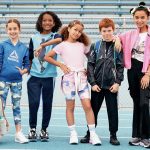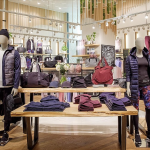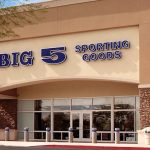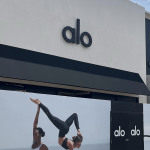Outdoor Retailer Winter Market remains the premier show of the season for any company addressing the backcountry market through hardgoods, technical softgoods, or lifestyle product. The fuel for growth in the industry is clearly shifting to more softgoods, although many hardgoods vendors are reporting solid numbers this season as well. While fashion and lifestyle-performance cross over products were prevalent on the floor, there seems to be a shift to more high-tech performance silhouettes in apparel with designers placing function over aesthetics on the hierarchy of features.
At the same time, more than one apparel company told BOSS that their line was dramatically reduced in size this year, in an effort to focus more on the core audience for the brand, which also resulted in a greater percentage of technical product designed for the core end user. In previous years, designers had the freedom to create huge apparel lines, but this year, many companies have pulled back on the reigns in an attempt to do what they do best instead of being everything to everyone.
Many on the floor commented on the fact that foot traffic seemed to be down, and OR show management confirmed that overall attendance was down slightly, but this was primarily due to fewer international buyers on the floor. Domestic Retail Attendance in 2006 was 4,307 compared to 4,073 last year. International Retail Attendance in 2006 was 337 from 29 countries while 2005 attracted 750 people from 35 countries. Media attendance increased considerably with 362 versus 289 last year. This brought total attendance to 14,138 compared to 14,145 last year.
Mountan Khakis has been on a steep growth curve over the past year, opening over 200 new doors and capping new dealers in order to control growth. Mac Lackey, the founding partner in the business told BOSS that they should have 450 doors by 2007. Mountain Khakis is sticking to its “waist-down” niche, and this year the brand extended into cords for both men and women. It is also offering retailers a new rapid replenishment program to keep the core MK items in stock year round.
ExOfficio is seeing their market bounce back from its post 9/11 slump and is positioning itself to deliver its core adventure travel message and draw more attention to the outdoor industry as a whole. The company joined the Conservation Alliance this year and is ramping up its environmental support with a cohesive message across all categories. ExOfficio is also involved as a title sponsor of the new iMax film, Hurricane on the Bayou, which covers the series of gulf coast hurricanes last summer with before, during, and after perspectives filmed in full-sized iMax format.
ExOfficios designers are focusing on using new fabrics and technologies that look more natural, but still offer all of the benefits of quick drying and wicking synthetics. To do this, they have incorporated nano-technology into different cotton materials to make them waterproof, introduced wool into the line, and even created a buzz-off jean.
Blurr is gaining more traction in the U.S. every year and is one of the few companies on the floor who have figured out the style element and how it can help the Outdoor Industry. The company is focusing its marketing efforts on the youth and using the same, proven model that the action sports industry has used again and again build rock-star, anti-establishment athletes and the younger generation will notice.
The company is not simply focused on marketing; they also are looking at the environmental impact from their products and manufacturing. Blurr will be using only organic cotton by spring of 2007 and has eliminated the use of PVC in their packs and chalk bags. The company has also opened up several new doors in the U.S., including EMS, and grown their presence at REI.
Lolé is another relatively new company on the OR show floor that is garnering attention. The brand is part of Eric DAnjous consortium of brands called Coalision, which also owns the SnowSports brand Orage. Lolé targets the 25 to 45 year-old female with lifestyle apparel that readily crosses over into active use. The company has created two lines within the collection, “live in,” which focuses on sportswear and “live out,” which focuses on outerwear. All of the companys products pop off the shelves with a distinctly feminine look that performs at the boulders, in the yoga studio or at the cross country ski park.
For the past three years, Lowe Alpine has been focusing on its internal organization after its acquisition and move to join Asolo in their New England headquarters. Now that these changes are behind them, the company is able to focus more on product design, development, and marketing than it has in the past. At OR Winter Market, the company launched a new line of ski packs, which were described as “a glimpse at the direction” for the rest of the product line in the future.
In apparel, the company has developed a zoning system for fleece insulation that is available in both laminated inside shell systems and in a stand-alone fleece piece. Similar to Polartecs collaboration with Patagonia last year, this zoning system places thicker insulation where warmth is needed and thinner wicking material where it is not.
Golite is continuing its key partnerships with LaSportiva for trail running and Timberland for both sprint and expedition adventure racing. Golite has also inked a new deal with Backpackinglight.com. The company has narrowed its marketing, and product design focus down to three core categories fast & light backpacking, trail running, and adventure racing.
Golite CEO Kim Coupounas told BOSS that this new focus cut their product line in half, but the reaction from retailers has been very positive, with pre-season sales tripling. Golite is also looking at new programs to develop casual outdoor participants into life-long fast & light backcountry athletes. It has developed relationships with the Boy Scouts of America and the National Outdoor Leadership School to teach new lightweight backpacking programs to new students. On the product side, Golite hired a new designer, Lesa Street, from Patagonia and Isis to bring more female influence to their line. Coupounas said that spring of 2007 is when the line will really change.
Mountain Hardwear has incorporated what it is calling “MicroClimate Zoning” into many of its shells. Medium pile fleece is welded in select locations for added warmth over the shoulders and on the back. This cuts down on the weight of the overall garment, adds warmth, and retains excellent articulation and breathability. MTH is also using Primaloft insulation throughout their snow wear and outerwear lines for the narrow profile that is catching on throughout the industry.
Mammuts apparel offering continues to gain some momentum in the U.S. with a 30% sales increase again this year. The entire Mammut brand grew 24% for the year. The company is using hybrid fabrics and more welded seams throughout its line. Of particular note is the re-launch and re-design of Mammuts Extreme line. Retailers seem to have adjusted to the transition from the former Climb High to the new Mammut Sports Group concept without any problems. Mammut has also launched a new Nordic apparel line under the Toko brand. Raichle is seeing some growth in the U.S., but in order to accelerate this, Mammut is bringing their rep force in house in the Northwest and Northeast.
A key trend that has broader implications than what appears on the surface is the move towards more welded outerwear. Most of the major brands, like Marmot, The North Face, and Mountain Hardwear are looking at this process as the next big technological innovation. Some pieces are completely stitch-less. The broader implication here involves the textile and laminate companies, particularly W.L. Gore. More than one product manager told BOSS that their line is using less Gore product this year because welded seams are not permitted. As a result, these vendors are using more of their in-house waterproof breathables.
One company that has been able to capitalize on welded seam technology is eVent. While the company has been touting their technology and breathability for years, it has still been somewhat limited in its distribution. Now, the company is seeing more vendors choose the material than ever before, and not only with apparel. Hi-Tec has been a partner with eVent for several years and Keen decided to use the laminate in their new trail running footwear line this year. Other notable new companies include Spyder, New Balance Performance Outerwear, DC, Vaude, and O'Neill.
Marmots push into wearable technology is starting to pay off with some useful innovation that will appeal to more than just the hard-core backcountry crowd. The new iGlove uses an electronically conductive material in the fore-finger and thumb to allow full iPod use while the gloves are still on. The company is also pushing the boundaries of what can be done with welded seams in outerwear. Marmot said that their pre-season orders are up 60% for Fall06. The company has also hired a new VP of Design, Greg Houser, and is restructuring its design department.
Cloudveil had yet another successful year and is looking at new technologies to make the brands presence on the retail floor even more eye-catching. The company is using the new video iPod to pod-cast product clinics, company history, and athlete profiles directly to the customer on the retail floor. Cloudveil will roll the concept out to a few select retailers this spring and then expand it in Fall 2006. Customers will be able to listen to Brian Cousins and Stephen Sullivan talk about how they founded Cloudveil while they skin up Teton Pass.
The North Face is taking technology to the next level while their sponsored athletes are pushing the envelope of what is humanly possible. In particular, Dean Karnazes has designed TNFs next generation of running shoe, which is specifically tailored to the 50-100 mile racer. The shoe incorporates a BOA lacing system for on-the-fly adjustments and can actually expand up to three widths as a runners foot expands. To promote the shoe, Karnazes will run 50 marathons in 50 states in only 50 days. TNF is calling this their E50 campaign.
The company is also developing and refining welded technology with their HyVent waterproof-breathable laminate. TNF has created a completely stitch-less hard shell. To compliment this, TNF created a stitch-less down jacket with welded baffles. They are also looking at narrower, more tailored silhouettes in their insulated pieces, and have created a new fleece jacket with expectations of big volume possibly even taking the place of the Denali.
ArcTeryx has successfully marketed technical apparel blending hard and soft shell materials in the same garment. For fall 2006, ArcTeryx will introduce the Seeker Comp Jacket that expands the hybrid concept. Hardshell fabric will be used in areas where protection from the elements is needed. Stretch woven fabrics will be used where breathability and freedom of movement are required. The companion Seeker Pant uses Schoeller Dynamic Nanosphere to provide protection and breathability.
The company will expand its line of purpose-built snowsports outerwear with the introduction of the Scorpion Jacket and Pant. Both garments use GORE-TEX Soft Shell High Loft fabric. The material adds warmth and is quieter than traditional waterproof fabrics in motion.
Ibex started marketing wool in 1997 and is enjoying the increased interest in natural fabrics. Sustainability continues to be a strong theme. The line includes a variety of weights. The lightest, at 17.5 micron, feels like silk. For 2006, Ibex will add new pieces to its collection of jackets, pullovers, base layers, tights, hats and gloves while Color is becoming a significant design element throughout the line.
Woolrich celebrated its 175th anniversary in 2005. The company is the oldest apparel manufacturer in continuous operation in the United States. For 2006, three new mens jackets: Original Arctic Parka, Brush Creek, and Russett are featured introductions. Woolrich designed the first edition of the Arctic Parka to outfit construction workers building the Alaska pipeline. The Brush Creek and Russett jackets are functional, fashionable outdoor lifestyle pieces. For women, the Calera coat is inspired by classic Navy pea coat styling. The Cedar Flats jacket, Centerview Parka, and Fernvale jacket are tailored specifically to feminine fit, design tastes, and colors.
Innovation in technical apparel is not limited to jackets and paints. Kombi introduced a new glove designed to assist outdoor enthusiasts stay connected. The gauntlet style OTC glove features the exclusive Cell Spot for storage and one hand access to a cell phone. A pocket of sheer, stretch material holds the phone in place. With the phone set to vibrate mode, the user will be aware of incoming calls and easily withdraw the phone with one hand. The OTC will be offered in mens and womens sizes and gender based color palettes.













